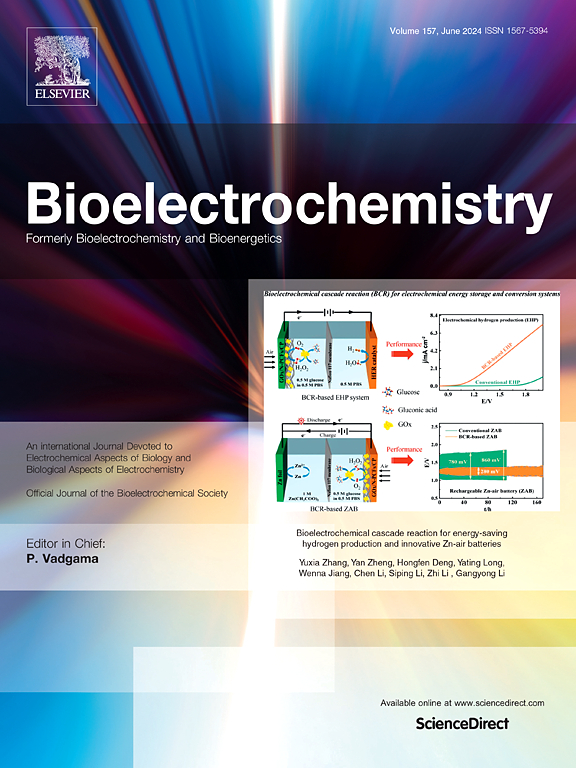Acute stress activates basolateral amygdala neurons expressing corticotropin-releasing hormone receptor type 1 (CRHR1): Topographical distribution and projection-specific activation in male and female rats
IF 3.6
2区 医学
Q1 NEUROSCIENCES
引用次数: 0
Abstract
Although the basolateral amygdala (BLA) and corticotropin releasing hormone receptor type I (CRHR1) signaling are both central to the stress response, the spatial and circuit-specific distribution of CRHR1 have not been identified in the BLA at a high resolution. We used transgenic male and female CRHR1-Cre-tdTomato rats to topographically map the distribution of BLACRHR1 neurons and identify whether they are activated by acute stress. Additionally, we used the BLA circuits projecting to the central amygdala (CeA) and nucleus accumbens (NAc) as a model to test circuit-specific expression of CRHR1 in the BLA. We established several key findings. First, CRHR1 had the strongest expression in the lateral amygdala and in caudal portions of the BLA. Second, acute restraint stress increased FOS expression of CRHR1 neurons, and stress-induced activation was particularly strong in medial subregions of the BLA. Third, stress significantly increased FOS expression on BLA-NAc, but not BLA-CeA projectors, and BLA-NAc activation was more robust in males than females. Finally, CRHR1 was expressed on a subset of BLA-CeA and BLA-NAc projection neurons. Collectively, this expands our understanding of BLA molecular- and circuit-specific activation patterns following acute stress.
急性应激可激活表达促肾上腺皮质激素释放激素受体 1 型 (CRHR1) 的杏仁核基底外侧神经元:雌雄大鼠的地形分布和投射特异性激活
尽管杏仁基底外侧(BLA)和促肾上腺皮质激素释放激素受体 I 型(CRHR1)信号传导都是应激反应的核心,但 CRHR1 在杏仁基底外侧的空间和回路特异性分布尚未得到高分辨率的鉴定。我们利用转基因雄性和雌性 CRHR1-Cre-tdTomato 大鼠绘制了 BLACRHR1 神经元分布的地形图,并确定它们是否被急性应激激活。此外,我们还以投射到杏仁核中枢(CeA)和伏隔核(NAc)的BLA回路为模型,测试了CRHR1在BLA回路中的特异性表达。我们得出了几个重要发现。首先,CRHR1在杏仁核外侧和BLA尾部的表达最强。第二,急性束缚应激增加了CRHR1神经元的FOS表达,应激诱导的激活在BLA的内侧亚区尤其强烈。第三,应激明显增加了BLA-NAc上的FOS表达,但没有增加BLA-CeA突起上的FOS表达,而且男性的BLA-NAc激活比女性更强。最后,CRHR1在一部分BLA-CeA和BLA-NAc投射神经元上表达。总之,这拓展了我们对急性应激后BLA分子和回路特异性激活模式的理解。
本文章由计算机程序翻译,如有差异,请以英文原文为准。
求助全文
约1分钟内获得全文
求助全文
来源期刊

Neurobiology of Stress
Biochemistry, Genetics and Molecular Biology-Biochemistry
CiteScore
9.40
自引率
4.00%
发文量
74
审稿时长
48 days
期刊介绍:
Neurobiology of Stress is a multidisciplinary journal for the publication of original research and review articles on basic, translational and clinical research into stress and related disorders. It will focus on the impact of stress on the brain from cellular to behavioral functions and stress-related neuropsychiatric disorders (such as depression, trauma and anxiety). The translation of basic research findings into real-world applications will be a key aim of the journal.
Basic, translational and clinical research on the following topics as they relate to stress will be covered:
Molecular substrates and cell signaling,
Genetics and epigenetics,
Stress circuitry,
Structural and physiological plasticity,
Developmental Aspects,
Laboratory models of stress,
Neuroinflammation and pathology,
Memory and Cognition,
Motivational Processes,
Fear and Anxiety,
Stress-related neuropsychiatric disorders (including depression, PTSD, substance abuse),
Neuropsychopharmacology.
 求助内容:
求助内容: 应助结果提醒方式:
应助结果提醒方式:


